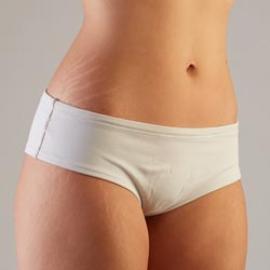
Calf implants enable to increase the volume of thin calves. Except with intense sports, the calf is very difficult to build up. Therefore, the most efficient approach is to use a silicone calf prosthesis.
Chicken legs: Indication
Too thin calves, usually called "chicken legs", are those in which muscles are constitutionally underdeveloped. As a consequence, there is an imbalance between a rather well formed thigh and a thin leg.
Three muscles form the calf and accent it:
First, the gastrocnemius muscles: They are two superficial muscles, situated inside and outside the calf, that act as an extensor of the foot and partially intervene when bending the knees.
Second, the soleus muscle: is a deep muscle, partly covered on its upper portion by the gastrocnemius muscles, which is used primarily to maintain body stability.
Calf muscles are very difficult to build by playing sports. The answer to having a well tapered leg is to put implants.
It is also possible for individuals who do not wish to undergo surgery to administer very volumizing hyaluronic acid (HYAcorp).
Description of the process:
The calf implant positioning is done under general anaesthetic with one overnight stay at the hospital and can last between 45 minutes and 1h30.
The prostheses take the form of smooth shells loaded with a highly cohesive silicone gel. They are very durable and are designed to endure the stress of this part of the body. Calf implants have different sizes, oval or asymmetrical beads, and are adaptable in length to the anatomy of each person.
During operation, the patient is lying on his or her stomach. The surgeon makes a horizontal incision of 4 to 6 centimetres that is concealed in the knee flexion fold. As a result of this, the scars are very discrete and almost invisible.
The practitioner puts the calf implant under the muscles. Depending on the patient's anatomy and the desired length, the surgeon can position one or two prostheses per calf. Then he performs sutures with absorbable stitches and applies a modeling dressing to each limb.
The post-operative effects
The pain is minor and is well controlled by analgesics. It progressively fades in the first week. Some slight discomfort persists for the next few weeks.
Bruises will progressively disappear within a week, although some swelling in the calves and ankles can persist for one to three weeks.
The patient must wear compression stockings day and night for one month in order to keep the calf prosthesis in place. They must take anticoagulants to improve blood flow and minimize the risk of phlebitis for two weeks after the operation. The patient can resume everyday activities after one week, work from one and two weeks after and do sports after two to three months. It is not recommended to drive for the first 10 days.
The results: Well-defined calves
Results are immediately apparent but then become permanent after two to three months when the swelling is completely gone.
The calf implant is positioned in such a manner that the improvement in volume can be seen from the front and in the profile. Since the silicone gel has a consistency very similar to that of the tissues, the presence of the prosthesis is not very apparent to the touch and the definition of the calves looks very natural. Implants can be kept for life or removed if the patient so chooses.
Book your appointment for Calf Implants
A consultation is required for new customers.




















































